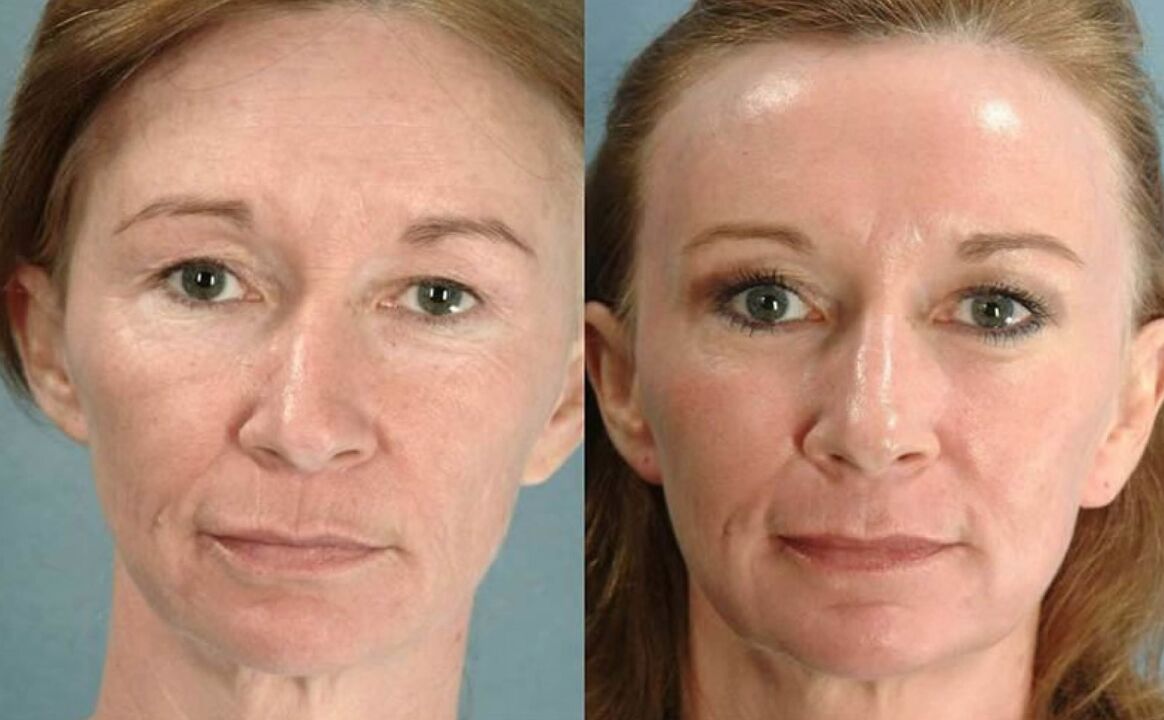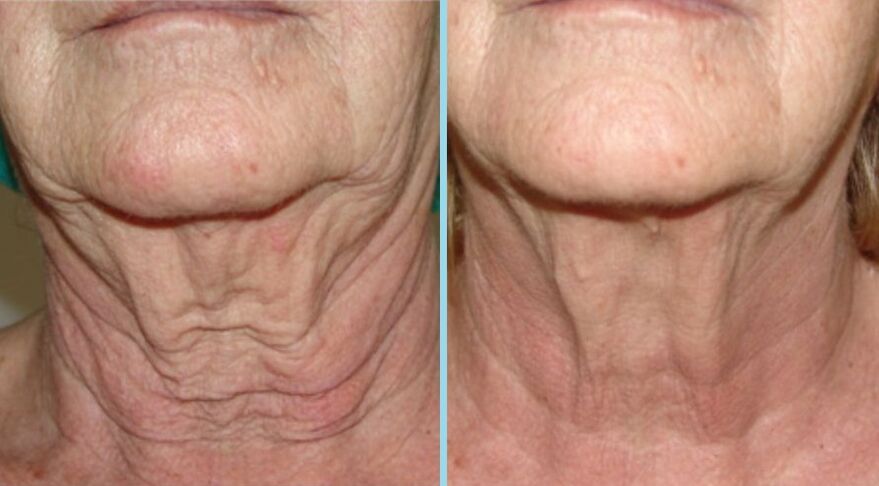Fractional laser rejuvenation or DOT is a modern and safe method of rejuvenation in cosmetology, which is carried out with the help of point laser exposure. DOT (English) - point.
purposes of the application
- Laser Skin Rejuvenation.
- laser treatment.
- Laser peeling.
- Correction of stretch marks, scars, post-acne.
- Laser blepharoplasty.
Get rid of age-related skin changes!
The essence of the procedure
The laser acts on the skin with microbeams that gently and selectively damage the epidermis and dermis. As you can see from the name of the procedure, fractional rejuvenation affects the fractions, the laser does not damage the surrounding tissues. This effect starts the regenerative function of our skin, the body starts to produce collagen and elastin.
benefits
- High efficiency.
- Visible effect after the first intervention.
- The method is applied to any part of the body.
- long-term result.
contraindications
- Pregnancy and breast feeding period.
- infectious diseases.
- oncological diseases.
- exacerbation of chronic diseases.
- Cold.
- recurrence of herpes.
- Epilepsy.
A variety of hardware and non-hardware techniques are now used in modern medicine to address the problems of young and aging skin. The most popular are photo, elos rejuvenation, laser rejuvenation and fractional laser rejuvenation (fractional photothermolysis method). Each of the methods solves a specific range of tasks.
And remember! Do not confuse fractional rejuvenation on the DOT device with the Fraxel device as they are fundamentally different devices whose purpose is skin rejuvenation! And Fraxel prices are typically higher than DOT treatment prices.
Do I need any special preparation for the procedure?
No special preparation is required for this procedure. However, depending on the indication, the doctor may prescribe antiviral and antibacterial drugs.
How long does the procedure take?
The duration of the procedure depends on your physiological characteristics and desires regarding the treatment area. On average, the procedure takes 15 to 60 minutes. The interval between sessions is 1-2 months.
Is the procedure painful?
Depends on your sensitivity threshold
Fractional taper and DOT - comparison characteristics
As they say in numerous reviews - to each their own - some Fractional Rejuvenation and some DOT. For example, someone managed to solve the problem of acne with the help of DOT, and someone with the same problem was helped by a laser. Not only does the laser itself play an important role, but also the quality of the preliminary diagnostics and the qualifications and experience of the beautician.
If a cosmetologist has been engaged in laser cosmetics for a long time, he will first tell you what is more suitable for you to solve your specific problem, and then competently perform the appropriate number of procedures - and it does not matter whether it is fractional rejuvenation or DOT -The main thing is the result. And if the cosmetologist is not experienced and attentive enough, then in case of not quite right choice, the same fractional rejuvenation can be less effective and more expensive than DOT, which such a cosmetologist carelessly ignored.
| Characteristic | Partial taper | POINT |
| field of use |
|
|
| feelings from the process | The procedure is very painful, anesthesia is required. During the fractional rejuvenation procedure, the treatment site appears to be doused with boiling water. | In most cases, the procedure can be tolerated without anesthesia. "Emala" is used for particularly sensitive patients. |
| Possibility of eyelid rejuvenation | Features of this type of laser exclude work on the eyelids | Eyelid tightening is possible. The upper and lower eyelids are rejuvenated down to the ciliary zone. |
| Which parts of the body are treated with the devices? | Only works on bones | Can act not only on bone tissue, but also on boneless tissue |
| Machine scan modes | The Fractional Rejuvenation device has one scanning mode - vertical. Only the penetration depth of the laser can be adjusted. | In the DOT device you can set different scan modes, such asB. Line (the laser acts horizontally on the skin layers and works layer by layer) and solid line (the laser acts horizontally on the skin layers and works layer by layer). |
| Microthermal zones (rejuvenation zones) or the possibility of customization | Closely. It is possible to adjust the density of the applied microzones from 125 to 250 microzones per cm². 6 to 8 overlay passes are required to achieve sufficient density of microzone application. Ability to change energy density by up to 70mJ per microzone. | The widest. You can set different areas of laser exposure. It is possible to regulate the depth of ablation and thermal damage, the distance between microzones from a continuous coating to 2mm between microzones. (up to 300 mJ per micro zone) |
| frequency of procedures | From 3 sessions. Otherwise bad result. | 2-4 sessions with a break of 28-29 days or less |
| Working speed | medium | high |
| average price | more expensive than DOT | more affordable than fractional taper price |
What to expect during the rehabilitation period and how should the skin be cared for?
After the procedure you will feel a slight burning sensation for the first 30 minutes. The redness will subside in 1-2 days. And peeling will appear after 2 days. During the rehabilitation period, the use of cosmetics in the treatment area is prohibited. In order for the rehabilitation period to be successful, it is necessary to follow the recommendations of a cosmetologist.
- The doctor will prescribe you special ointments and creams. In the first days, the interval of their application should be every 1-2 hours.
- If necessary, the doctor may recommend that you wear a medical mask for the first few days of rehabilitation.
- You should never touch the resulting crusts. This can lead to scarring and, in the worst case, infection.
- Depending on your characteristics, after a detailed anamnesis, the doctor can prescribe you antibacterial and antiallergic drugs. All medications and special cosmetics are discussed in a personal consultation with a specialist.
Fractional taper results


























